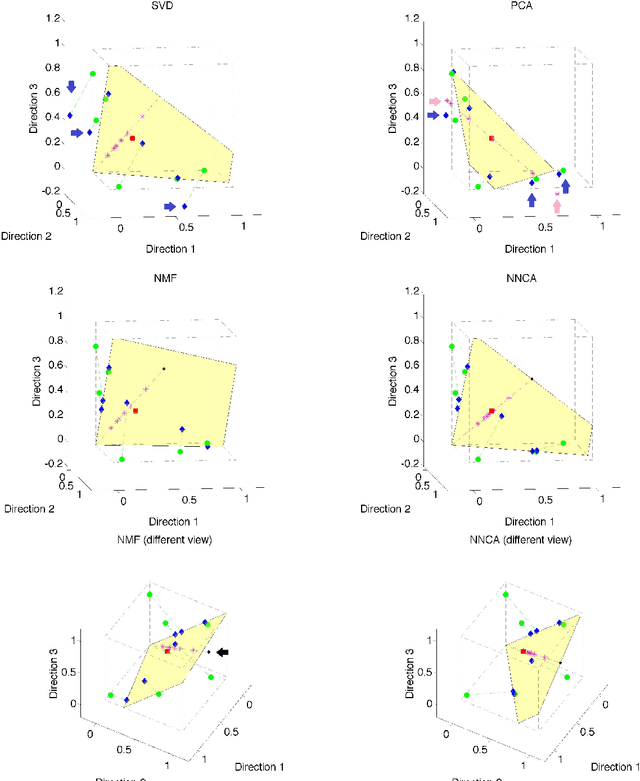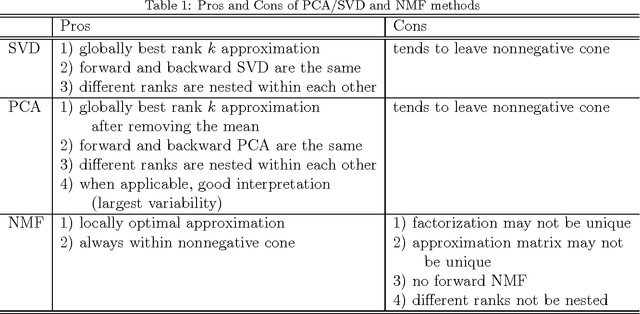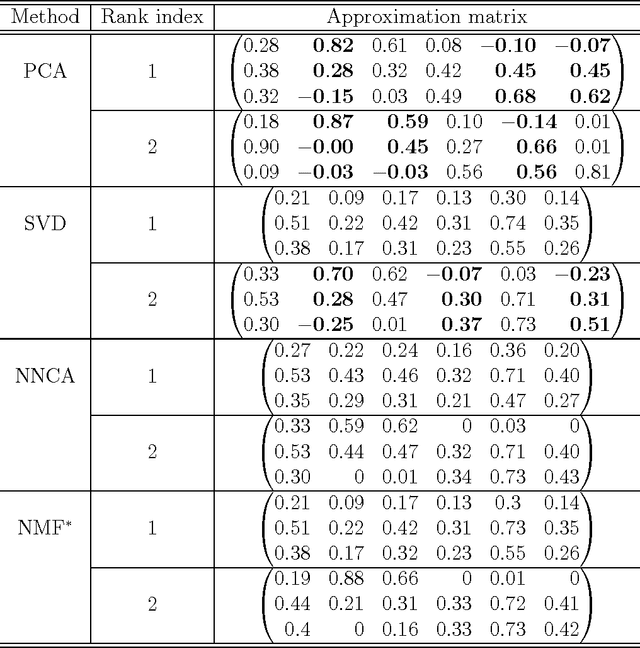Nested Nonnegative Cone Analysis
Paper and Code
Sep 06, 2013



Motivated by the analysis of nonnegative data objects, a novel Nested Nonnegative Cone Analysis (NNCA) approach is proposed to overcome some drawbacks of existing methods. The application of traditional PCA/SVD method to nonnegative data often cause the approximation matrix leave the nonnegative cone, which leads to non-interpretable and sometimes nonsensical results. The nonnegative matrix factorization (NMF) approach overcomes this issue, however the NMF approximation matrices suffer several drawbacks: 1) the factorization may not be unique, 2) the resulting approximation matrix at a specific rank may not be unique, and 3) the subspaces spanned by the approximation matrices at different ranks may not be nested. These drawbacks will cause troubles in determining the number of components and in multi-scale (in ranks) interpretability. The NNCA approach proposed in this paper naturally generates a nested structure, and is shown to be unique at each rank. Simulations are used in this paper to illustrate the drawbacks of the traditional methods, and the usefulness of the NNCA method.
 Add to Chrome
Add to Chrome Add to Firefox
Add to Firefox Add to Edge
Add to Edge